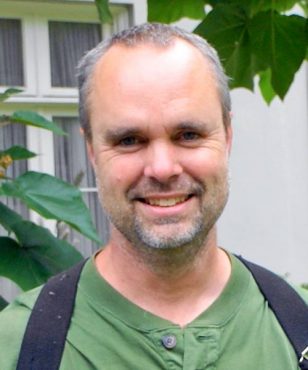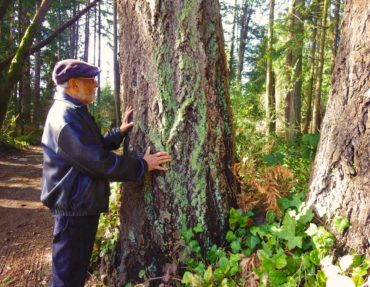 More than a few trees in this region owe their lives to a man in a quiet neighborhood on Bainbridge Island. Well, not just the West Sound, but elsewhere in the country. And the world. And not just trees but a few pumpkins as well.
More than a few trees in this region owe their lives to a man in a quiet neighborhood on Bainbridge Island. Well, not just the West Sound, but elsewhere in the country. And the world. And not just trees but a few pumpkins as well.
Olaf Ribeiro is a friendly man full of Loraxian energy. So much energy that “people often think I’m younger than I really am” says Ribeiro, a loving grandfather. That energy, combined with decades of scientific pursuit and a deep love for trees, leads him to be not only a “tree doctor” but a voice for trees.
Together, Ribeiro and his wife, Nancy, maintain a small home and an unassuming but well-tended garden. Operating out of a small office and lab in the back of the property, Ribeiro Tree Evaluations, Inc. has served clients ranging from small-home owners to people with megamansions.
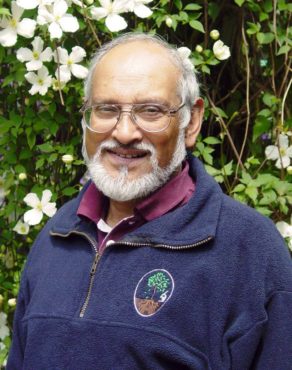
While most of his work is local, he has traveled the country as far as New York to inspect two 400-year copper beech trees and to San Antonio to investigate trees on a 4,000-acre ranch. “People are willing to pay to save their trees,” says Ribeiro about the love people have for their leafy companions.
Ribeiro’s tree knowledge is respected and sought after worldwide. He has been featured on local TV for helping save historic cherry trees, in the Wall Street Journal and on the NBC Today show featuring his work on saving trees. On invitation, he has ventured to the United Kingdom to give talks on how to keep old trees going. Much of his speaking focus has been on tree-fungus relationships.
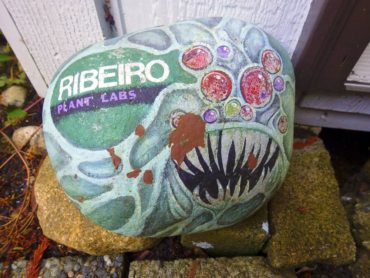
After discovering that a colleague had plagiarized his work, Ribeiro contacted the gentleman, who replied, “I hold you in such high regard that I didn’t change a thing!”
While his focus now is trees, Ribeiro has a broader range of experience in the plant world. With a doctorate degree in plant pathology, the study of plant diseases, he literally “wrote the book” on phytophthora, a fungus-like genus of organisms. Ancient Greek for “plant destroyer,” phytophthora species are a botanical menace and several are present in the West Sound.
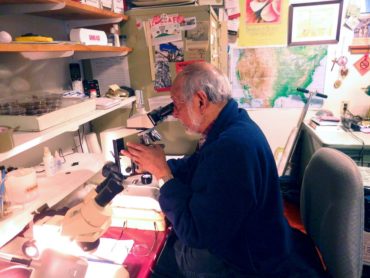
The more familiar are the ones that cause the potato disease called late blight, responsible for the Great Famine in Ireland from 1845 to 1852, and sudden oak death, a scourge on the oaks and tanoaks in California and Oregon. So important are these diseases that Ribeiro’s book, “Phytophthora Diseases Worldwide,” written in the mid-1990s, is still a valuable resource.
Originally, Ribeiro Tree Evaluations was a plant-disease-identification service called Ribeiro Plant Labs. In those days, Ribeiro had an assistant and they would try to keep up with an influx of disease samples from all over the country. Not just trees, but also samples of turf, fruit crops, agricultural crops and all sorts of ornamentals were submitted.
For some clients, a delay in disease identification could mean millions of dollars in revenue losses. For that reason, Ribeiro was committed to a quick turnaround time but that often meant long hours of work. Finally, with the high demand and not enough help, Ribeiro decided to switch to working with trees only. Now he works strictly by referrals and still has plenty of work to stay busy. Most of his clients own high-end landscapes in Seattle.
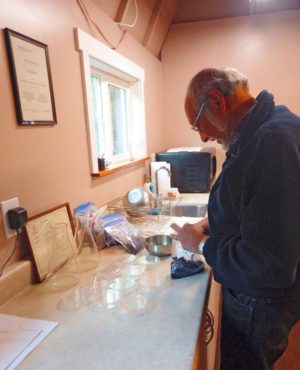
When not visiting clients or grandchildren, Ribeiro can be found working on other tree-related pursuits. As an activist for trees, he tries to get people to understand the importance of trees. For several years, Ribeiro has been fighting to get a tree ordinance enacted in the city of Bainbridge Island.
“We want to develop a tree ordinance to get people to think twice about removing trees,” he says.
Able to talk at length on the necessity of trees, Ribeiro summarizes a healthy, growing tree as “essentially a pollution-eating device and a mini-air conditioner.” Add to that numerous environmental, psychological, health and economic reasons to plant and retain trees, and you begin to understand why it is natural to prefer green areas over urban concrete.
Arbor Day, the tree lover’s holiday, is not time of rest for Ribeiro. On this national day to promote trees, he works within his community to raise awareness of trees on Bainbridge Island. The Murden Cove Preservation Association, of which he is the president, has joined with other island entities including Bainbridge High School students, Sustainable Bainbridge, Bainbridge Parks Foundation, the Bainbridge Island Land Trust, the Bloedel Reserve and several others. Together, they come up with ways to celebrate Arbor Day through events and activities with local businesses and organizations.
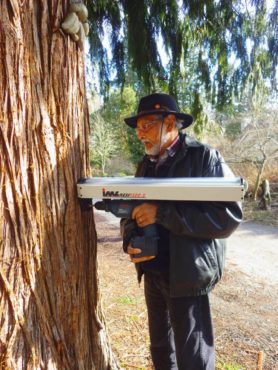
Throughout this past April, Arbor Day activities on Bainbridge Island included a booth at the farmers market, various talks by Ribeiro and others, tree plantings, tree walks and school-related events. All events have the goal of promoting appreciation for trees and understanding of their importance. This year’s slogan: “Celebrate Trees!”
Ribeiro’s expertise is prized in this area and doubtless many trees owe their lives to him. But in 2000, he was drawn into the dark underbelly of horticulture: growing giant pumpkins. He didn’t grow them himself, but his reputation attracted the attentions of one Geneva Emmons. His advice on soil relations helped her grow the 2001 world record pumpkin, weighing in at 1,262 pounds.
Word spread and Ribeiro began receiving calls for pumpkin help from all over the world, even as far away as South Africa. “I had no idea how many people were interested in growing giant pumpkins,” he says.
For now, his pumpkin-whisperer notoriety has died down and Ribeiro can focus on his passion. West Sound is a little greener thanks to him, and we are all the better for it.




